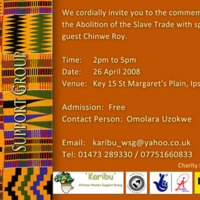
Karibu African Women's Support Group
Karibu provides information, advice and help service to African women and their families in Ipswich and Suffolk. Karibu women joined the celebrations marking African History Month in Suffolk in 2007. The event 'Reaching Out Promoting Cultural Values' was designed to reach out to other local communities. It featured a keynote speaker address, workshops on health and beauty, and parades of foods and culture from Africa. 'Our Children Our Pride' was an activity day featuring carnival arts and crafts, drumming sessions, dance, and stories from Africa.
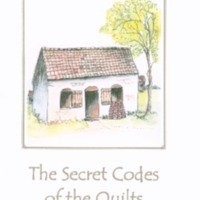
The Secret Codes of the Quilts
The Quaker Quilters of Norwich Quaker Meeting held the Slave Quilts Exhibition at the Friends Meeting House in Norwich in May 2007. By the 1860s in the United States there were organised flights to freedom for enslaved people from the southern plantations via the Underground Railroad – a network of paths leading to the North and Canada. The ‘safe houses’ where assistance was offered on the way were often the homes of Quakers. This exhibition looked to reproduce some of the secret codes said to be hidden within the symbols and patterns featured in quilts made by slaves, to pass on directions to those looking to escape.
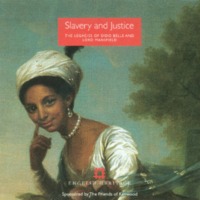
Slavery and Justice: The Legacies of Dido Belle and Lord Mansfield
Kenwood House in North London is closely connected to the history of the slave trade through the lives of two of its former inhabitants. Lord Chief Justice Lord Mansfield made a milestone ruling in 1772 towards abolition of the transatlantic slave trade. Dido Elizabeth Belle - born to an enslaved mother - is believed to have been Lord Mansfield's illegitimate great-niece. This exhibition by English Heritage, and sponsored by the Friends of Kenwood, explored their relationship, and the social dimensions of the British slave trade intertwined with the history of Kenwood. Visitors to the exhibition were invited to leave a creative literary response. The Wall of Words, a literary mural in the form of a poem inspired by the recorded responses, was created by Beyonder, a multimedia artist and educator.
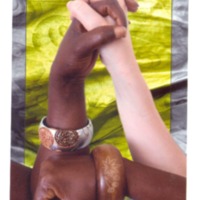
Greetings! Wilberforce Women
The Wilberforce Women project was launched by the Hull Women's Centre with the support of Wilberforce 2007. Hull based photojournalist Lee Karen Stow worked with groups of women from the twinned towns of Hull and Freetown (Sierra Leone), through photography and messages of friendship. Women from Hull were invited to think about themes of Pride, Freedom, Belief and Change and contribute a photograph on the chosen theme to send as greetings to women in Freetown. To return the greetings, women in Freetown were taught basic photography skills in order to interpret their own thoughts on the themes. A selection of the images were displayed at the Humber BBC Open Centre and on the BBC Humber website, as well as a dedicated exhibition at the Ferens Art Gallery and at the Wilberforce Institute for the Study of Slavery and Emancipation. A second stage of the project saw the images and messages being collated into a photographic book and DVD.
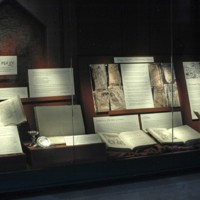
Distorted Image
Inspired by the bicentenary, the Distorted Image exhibition at Hereford Cathedral explored how distorted perceptions throughout history have resulted in prejudice, discrimination and enslavement. Incomplete or misleading images of human beings, who are black or female or in some way considered 'other', have resulted in unjust behaviour against them, particularly in the case of restricted legal and political rights. Alongside the example of slavery, this exhibition also looked at the invariably inferior position of women within church teaching. Distorted Image was part of the ongoing Mappa Mundi and Chained Library exhibition. The Hereford Mappa Mundi is a 13th century map featuring drawings of the history of humankind and the natural world, which records how medieval scholars interpreted the world in spiritual as well as geographical terms.
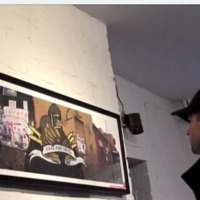
Freedom Song
Freedom Song involved young people from Derby, Leicester and Nottingham creating their own digital musical video shorts to express contemporary social and cultural experiences. The group in Derby looked to develop links to regional history and culture through the study of the songs of oppression and freedom of the slave trade and its musical legacies today. A heritage project involved participants researching music of their ancestors and predecessors in the cultural tradition, exploring the Windrush migrations, oral traditions and the impact of female artists on music cultures in the UK.
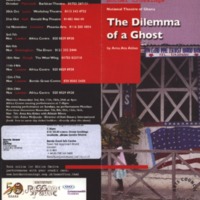
The Dilemma of a Ghost
Written by Ghanaian playwright Ama Ata Aidoo, The Dilemma of a Ghost deals with colliding cultures in 21st century Africa. An African-American woman accompanies her Ghanaian husband as he returns home, but the couple are haunted by ghosts of the inheritance of the slave trade. A collaboration between London theatre company Border Crossings and the National Theatre of Ghana, the production used music and dance to celebrate 50 years of Ghana’s independence and 200 years since the abolition of the transatlantic slave trade. The play was performed in Birmingham, Hull, Leeds, Leicester, London, Plymouth and Slough. The production was was accompanied by a new book from Border Crossings, working in collaboration with Anti-Slavery International. ‘Theatre and Slavery: Ghosts at the Crossroads’ explored the ways in which world theatre responds to key issues in modern society and politics, including the issue of contemporary slavery.
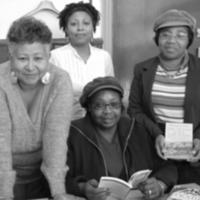
Interwoven Freedom
SCAWDI are a Birmingham-based community group specialising in working with local volunteers to research the early presence of Black people in the West Midlands. In collaboration with English Heritage, ‘Interwoven Freedom’ enabled a group of local women to visit archives, exhibitions and historic sites and explore the role of women in the abolitionist movement. The participants drew on traditions of abolitionist women such as Elizabeth Cadbury creating and distributing workbags filled with anti-slavery manifestos by making their own textile bags from fair trade cotton and African cloth. They wrote their own manifestos which mixed historical facts with fictional stories and poems. The accompanying exhibition of textiles, text panels and an audio documentary toured London and 11 regional venues. The exhibition included photographs documenting the project by photographer Vanley Burke.
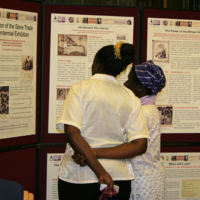
Abolition of the Slave Trade Bicentennial Exhibition
This exhibition held by the Cadbury Research Library: Special Collections at the University of Birmingham included material from the archives of the Church Missionary Society held there, and some of its rare book collections. The accompanying information boards are featured here. The exhibition focused on the role of religion in the abolitionist movement, the power of the African voice in literature, and the role played by Birmingham residents in the anti-slavery campaigns. A booklist on anti-slavery publications held at the library was also produced. The exhibition was part of a University-wide initiative, with additional involvement from academic departments and the Guild of Students. An online exhibition was also produced in collaboration with the Library of the Religious Society of Friends: 'Quakers and the path to abolition in Britain and the colonies'.
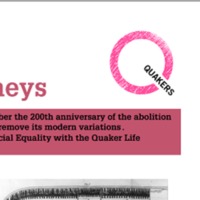
Quakers and the path to abolition in Britain and the colonies
The Society of Friends expressed its formal opposition to the slave trade in 1727, and from that date were vocal opponents of transatlantic slavery. A virtual exhibition of archived resources, ‘Quakers and the path to abolition in Britain and the colonies’, was launched online to commemorate the bicentenary. It traced the history of the anti-slavery movement from its Quaker beginnings and highlighted key events in the Quaker history of opposition to the slave trade, and was primarily based on material from the Library at Friends House. The exhibition also explained the important role played by Quaker women abolitionists through writing and poetry. The Quakers pioneered contemporary tactics such as boycotting, petitions, leafleting and poster campaigns.
Other resources to help people find out more about the bicentenary included ‘Abolition Journeys’, developed by Quaker Life Committee for Racial Equality with the Quaker Life Children and Young People’s Staff Team, designed to help people of all ages remember the slave trade and work to abolish its modern variations.
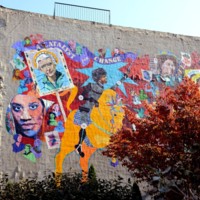
When Women Pursue Justice
In 2005, Artmakers Inc. created a large-scale political mural titled When Women Pursue Justice. During the genesis of the mural, it seemed like an overly ambitious project with little funding, and a heavy reliance on the generosity of its collaborators. Located in Brooklyn, at the busy intersection between Nostrand and Greene Avenue, the mural is populated with women who worked towards justice and social change over the last 150 years. The most visually noticeable figure on the mural is the thirty-five-foot image of Shirley Chisholm astride a golden horse and dressed in armour of African mud and kente cloth. Surrounding Chisholm are 90 women who risked their lives and liberty to achieve voting rights, civil rights, racial justice, health and reproductive rights, and environmental justice and protection – including the abolitionists Harriet Tubman and Sojourner Truth, as well as Angela Davis, Wilma Mankiller, Margaret Sanger, and Dorothy Day.
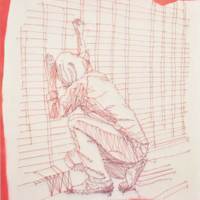
Tethered from The Scarlet Cord installation
The Scarlet Cord by Pamela Alderman is an installation that examines child sex slavery. Her website describes it 'As visitors step inside a 40-foot storage container filled with thirty doors, they enter a secret world. This dark world crosses religious and social economic borders to sell our children for sex. The twisting scarlet cord depicts the trauma bond that connects the children to their traffickers. The weathered doors represent these abused children whose youthful minds have become knotted. Alderman’s art—dedicated to these suffering children tethered within the sex industry—calls for compassionate action.'
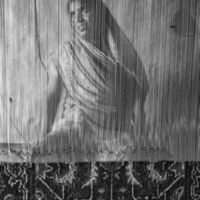
Modern Slavery, Indian Weaver
This image depicts 'Jadawati, a weaver, she is working on a 24 feet carpet which will take her nearly 40 days to complete. As a bonded labourer, she is paid 60 rupees a day, a rate nearly half the minimum wages entitled to her as per the law. The carpet that might sell for 25,000 rupees or more will have earned Jadawati less than 2,500.' The composition of the image gestures towards a sense of imprisonment; the woman is visible behind the fabric weave which acts as an intricate prison. As the rug fabric moves towards completion the figure of Jadawati slowly disappears behind the pattern, as the object of consumption obscures the human cost of production.
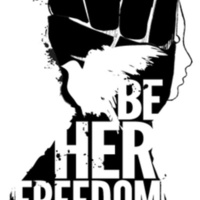
Be Her Freedom
The Be Her Freedom campaign is part pf the A21 movement which comprises of individuals, organizations, government officials, and members of the public who are committed to abolishing injustice in the 21st century. The image replaces the shackled pleading hands of past antislavery campaigns with a clenched fist - a symbol of self-determination and self-liberation.

The Bakhita Initiative
The image promotes the work of the Bakhita Initiative which is the Roman Catholic Church in England's response to the issue of contemporary human trafficking. The key stakeholders of the Bakhita Foundation are the Catholic Bishops' Conference of England and Wales, Caritas Westminster, and the Metropolitan Police. The image depicts Josephine Margaret Bakhita, F.D.C.C., (ca. 1869- 8 February 1947). Josephine was born in Darfur, Sudan. She was kidnapped into slavery as a girl in c.1877. In 1883, in Khartoum, Bakhita was purchased by the Italian Vice Consul Callisto Legnani. Bakhita eventually left Sudan with the family. She was taken in by the Canossian Sisters in Venice and refused to rejoin the Legnani family. On 29 November 1889 an Italian court ruled that Bakhita had never been legally enslaved because Sudan had outlawed slavery before her birth and because slavery was not recognised under Italian law. She became a Canossian sister and lived and worked in Italy for 45 years. She was eventually made a saint and has been adopted as the only patron saint of Sudan.